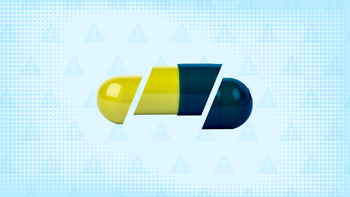
How to Sleep While Taking Cymbalta, Plus 5 More Pharmacist-Backed Tips for Taking It
Key takeaways:
Cymbalta (duloxetine) is FDA approved to treat depression, anxiety, and certain types of pain. Some people have sleep issues, such as drowsiness or insomnia, while taking it.
You can take Cymbalta with or without food and at any time of day. But changing when you take it may help lessen sleep-related side effects.
Most common Cymbalta side effects will go away over time as your body adjusts to it. But there are drug interactions and serious side effects that you should know about before taking it. Your healthcare provider and pharmacist can help make sure Cymbalta is a safe option for you.
Cymbalta is available as a lower-cost generic. GoodRx can help you save over 90% off the average retail price at certain pharmacies.
Access savings on related medications
Table of contents

Cymbalta (duloxetine) is an antidepressant medication. It’s FDA approved for depression as well as anxiety and certain types of pain. Cymbalta is generally well tolerated, but it can cause sleep issues for some people taking it. While this doesn’t happen to everyone, it can be frustrating to manage on your own.
If you’re wondering how to sleep while taking Cymbalta, we’ve got you covered. Read on for six tips to help you get the most out of your medication.
1. What can you do if Cymbalta causes sleep issues?
In studies, sleep issues were a side effect for some people taking Cymbalta. About 10% of people reported feeling sleepier than usual. But about 9% of people reported trouble sleeping (insomnia). Cymbalta can also cause abnormal dreams.
If you’re having sleep-related side effects from Cymbalta, here are some steps you can take:
Get regular exercise. Moving your body can help give you a boost of energy during the day. It can also help you sleep better at night.
Practice healthy sleep habits. A regular sleep routine can help you sleep better, which can help you feel less tired during the day. Try to go to bed at the same time every day. And limit screens an hour or two before bed.
Limit caffeine and alcohol. Caffeine can keep you awake, so it’s best to limit how much you consume — especially in the afternoon or evening. Alcohol can also prevent you from getting good quality sleep. So it’s a good idea to keep alcohol to a minimum if you’re having trouble sleeping.
Change when you take Cymbalta. Taking the medication at a different time of day may help. More on this in the next section.
Give it time. Cymbalta side effects often improve over a few weeks as your body adjusts to the medication. So it’s possible your sleep issues will go away on their own. It can also take Cymbalta 4 to 8 weeks to reach its full effect for some symptoms. So if your sleep issues are related to your health condition, it may take a while for them to improve.
Try an over-the-counter (OTC) sleep aid. It may help to take an OTC sleep medication if Cymbalta is causing insomnia. Just make sure your provider OKs it first.
Talk to your healthcare provider. If sleep changes are interfering with your daily life, let your provider know. They may want to lower your dose of Cymbalta. Or they may decide to change your medication.
2. What time should you take Cymbalta?
You can take Cymbalta at any time of day. But it’s best to choose a time and stick with it. This makes it easier to remember your dose.
As mentioned, if Cymbalta is causing sleep issues, it may help to change when you take it. If you’re feeling drowsy during the day, it may help to take Cymbalta at bedtime. But if you’re having trouble sleeping, taking it in the morning may be better for you.
It’s a good idea to let your provider know before changing when you take Cymbalta. They can make sure it’s a safe change to make.
3. Should you take Cymbalta with food?
You can take Cymbalta with or without food. But nausea is one of the most common side effects of Cymbalta. More than 20% of people reported nausea in clinical studies. So taking Cymbalta with food may help prevent nausea from happening.
4. Should I separate Cymbalta from my other medications?
No. Separating Cymbalta from your other medications isn’t necessary.
Even though Cymbalta has potential interactions, they aren't related to when you take your Cymbalta.
Some of the more important interactions to know about include:
Medications that impact how Cymbalta is broken down (metabolized): Some medications block the enzymes (proteins) that metabolize Cymbalta. This causes higher levels of Cymbalta in the body, which can cause side effects. Examples of these medications include cimetidine (Tagamet HB) and ciprofloxacin (Cipro).
Medications that can cause bleeding: Cymbalta can raise your risk of bleeding. So taking it with other medications that can cause bleeding can be dangerous. Examples include non-steroidal antiinflammatory drugs (NSAIDs) like naproxen (Aleve, Naprosyn) and ibuprofen (Advil, Motrin).
Medications that raise serotonin levels: Cymbalta raises the amount of a chemical called serotonin in the body. Too much serotonin can be dangerous and lead to a serious condition called serotonin syndrome. Medications that raise serotonin levels include selective serotonin reuptake inhibitors (SSRIs), monoamine oxidase inhibitors (MAOIs), and tricyclic antidepressants (TCAs).
Alcohol: Cymbalta can raise the risk of liver injury in people who drink a large amount of alcohol.
Other medications that affect the brain: Combining Cymbalta with medications like benzodiazepines or opioids can worsen side effects like sleepiness and dizziness.
This isn’t a complete list of interactions. Always provide an updated medication list to your healthcare provider and pharmacist so they can look for potential interactions.
5. What if I miss a dose of Cymbalta?
If you miss a dose of Cymbalta, take it as soon as you remember. But if it’s almost time for your next dose, then just wait and take your next scheduled dose.
Don’t double up on doses of Cymbalta to make up for one you missed. Taking two doses too close together can raise your risk of side effects from Cymbalta.
6. What can I do if I have side effects from Cymbalta?
Like most medications, Cymbalta has some side effects. Even though you may not experience all of these, it’s good to be aware of the most common and the most serious side effects that may happen.
Common side effects of Cymbalta include:
Nausea
Headache
Dry mouth
Feeling tired
Insomnia
Diarrhea or constipation
Dizziness
Lower than normal appetite
Sweating more than usual
Abdominal pain
Less common side effects include sexual and urinary problems.
If you experience any side effects of Cymbalta that are bothersome to you, contact your healthcare provider. They may be able to lower your dose or switch you to a different medication.
Serious side effects of Cymbalta can also occur. These include:
Suicidal thoughts or behaviors, especially in people younger than 25 years old
Liver problems
Lowered blood pressure that can lead to falls (orthostatic hypotension)
Higher-than-normal blood pressure
Withdrawal symptoms (discontinuation syndrome) if Cymbalta is stopped abruptly
Serotonin syndrome
Abnormal bleeding (like in your stool, urine, or from the nose or gums)
Serious skin reactions, such as Stevens-Johnson syndrome
Seizures
Low sodium levels
If you experience any of these severe side effects, contact your healthcare provider right away.
How to save money on your Cymbalta prescription
There are many ways to save on Cymbalta, which is available as both a brand-name and generic medication.
Save with GoodRx. GoodRx can help you save over 90% off the average retail price of the generic version. Generic duloxetine's price at certain pharmacies is as low as $10.20 for a 30-day supply with a free GoodRx discount.
Save with patient assistance programs. If you’re uninsured or underinsured, you may be eligible for brand-name Cymbalta’s patient assistance program, which offers the medication free of cost.
The bottom line
Cymbalta (duloxetine) is a prescription medication that’s FDA approved for depression, anxiety, and different types of pain. It can cause sleep issues for some people, including both drowsiness and insomnia. Regular exercise and good sleep habits are key to helping you sleep while taking Cymbalta.
You can take Cymbalta with or without food, at any time of day. But taking it with food can help prevent nausea. And changing what time you take it may help manage sleep-related side effects.
Keep in mind that many common Cymbalta side effects go away on their own as your body adjusts to the medication. But it does have interactions and serious side effects to be aware of. Talk to your healthcare provider about the risks and benefits of Cymbalta before taking it.
Why trust our experts?



If you or someone you know has had thoughts of harming themselves or taking their own life, know that help is available. The National Suicide Prevention Lifeline (988) provides 24/7, free, confidential support for people in distress, as well as best practices for professionals and resources to aid in prevention and crises.
References
American Association of Psychiatric Pharmacists. (2023). Duloxetine (cymbalta). National Alliance on Mental Illness.
Bryant Ranch Prepack. (2022). Duloxetine [package insert].
MedlinePlus. (2022). Duloxetine.
Was this page helpful?
Related Articles
Browse medications
View AllResearch prescriptions and over-the-counter medications from A to Z, compare drug prices, and start saving.




























